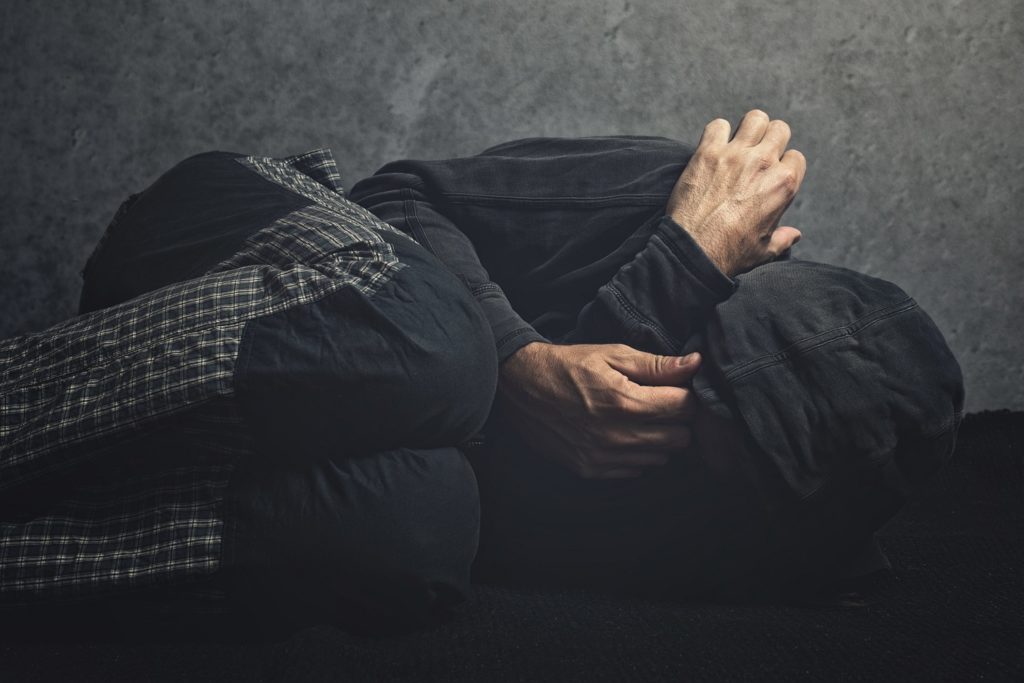CRACK COCAINE ADDICTION TREATMENT CENTER IN ORANGE COUNTY
Sections: What Is Crack Cocaine? | How Addiction Begins | Effects | Signs & Symptoms | Withdrawal | Treatment | Hope
WHAT IS CRACK COCAINE?
Crack cocaine (or “crack”) is a solid form of cocaine that is intended to be smoked as a vapor. Unlike its namesake, crack cocaine looks more like a hard white rock or clump of crystal. It is quite brittle and can be easily broken—or, more fittingly, cracked—apart. Rather than buying it in rock form, some users make their own by “cooking” powdered cocaine with household ingredients like baking soda and water.
Because the chemistry of the drug changes when cocaine is changed from a powder to a crystalline substance, the effects of crack are much more intense than the effects of regular cocaine. Because the drug can be vaporized with the heat from a lighter, users are able to inhale the chemicals directly into the lungs and achieve a fast, intense high. A crack high is much stronger than that of snorting powdered cocaine, which makes it especially desirable and addictive to users.¹
HOW ADDICTIVE IS CRACK COCAINE?
Crack cocaine is an extremely addictive substance that is well-known for having become something of an epidemic, especially in urban areas with severe poverty issues. Is crack more addictive than cocaine? It undoubtedly is. As a much stronger substance than regular cocaine (which is already quite strong), the euphoria and pleasure of the high are much more powerful. The short-lived nature of this high—which usually lasts only 5 to 10 minutes—often leads to frequent and compulsive usage patterns, increasing the risk of addiction.
The intensity of crack adds to the allure of the drug, as well as its potential for altering brain chemistry and resulting in a strong physiological addiction. It impacts the neurotransmitter dopamine, which plays a key role in the reward and pleasure centers of the brain. Repeated use can lead to changes in the brain’s reward system, making it difficult to experience pleasure from other sources.
Unlike other drugs that have more of an addiction risk with long-term use, crack cocaine is one of the most addictive drugs and can create a dangerous dependency in only one use.
THE PHYSIOLOGICAL EFFECTS OF CRACK COCAINE ON THE BODY

Crack cocaine causes a variety of strong physical and mental effects that are at first pleasurable, then turn immediately to discomfort when the drug wears off. During the high, users experience effects like the following:²
- Strong feeling of euphoria
- Dilated pupils
- Increased heart rate and blood pressure
- Extremely excited or “hyper” behavior
- Fast breathing
- Hallucinations
Once the high is over, the other face of the drug appears, and the user begins to experience the negative effects:³
- Nagging, obsessive cravings for the drug (even if the person doesn’t want to use it again)
- Anxiety, paranoia
- Anger, irritability
- Restlessness
- Sadness (can develop into depression)
The physical effects of crack cocaine can vary significantly from one person to the next. This is due to several factors, including individual physiology, the duration and intensity of drug use, psychological factors, and environmental influences.
NOTABLE SIGNS & SYMPTOMS OF CRACK ADDICTION
When a person develops an addiction to crack cocaine, the repercussions can affect not only their physical and mental health, but also their relationships and responsibilities. Every aspect of a person’s life can be detrimentally affected by a crack cocaine addiction; thousands have lost jobs, marriages, homes, finances, children, and even their own lives as a result of being addicted to crack.
The following are a few key symptoms that can serve as red flags that a person is dealing with a crack cocaine addiction:³
- Breathing problems, coughing up blood (“crack lung”)
- Poor liver and kidney function
- Strong tolerance
- Constant need to use more and more (potentially leading to overdose)
- Increased susceptibility to infection
- Disappearing appetite, significant weight loss, malnutrition
- Increasing aggression, edginess
- New or worsening anxiety and/or depression
- Unusual, suspicious behavior (“flaking” on friends and family, excuses, defensiveness)
- Lack of sleep
- Regular neglect of responsibilities (not showing up to work, failing to care for children)
- Difficulty maintaining jobs, friendships, etc.
WITHDRAWALS FROM CRACK COCAINE CAN BE SEVERE
In addition to the immediate downturn that occurs after the high of crack cocaine wears off, prolonged withholding of the drug from an addicted person can cause severe withdrawal symptoms:
- Muscle pain
- Intense nightmares
- Powerful, obsessive cravings
- Suicidal thoughts and feelings
- Extreme aggression and/or violent behavior
- Various flu-like symptoms
- Severe mood swings
- Psychosis
- Hallucinations
The intensity of withdrawal symptoms can make it very challenging to remain abstinent. That’s why individuals struggling with addiction to crack should seek out help from professionals who are experienced with proven detox methods.
WHY YOU SHOULD SEEK PROFESSIONAL HELP
Because crack cocaine is such a highly addictive and intense drug, both the experience of withdrawals and the first use following withdrawal can be incredibly dangerous. When crack is withheld for a certain length of time, the body can return to somewhat normal functioning. However, because the person is used to taking high doses at this point, this means there is an increased risk of overdose if he or she uses again. For this reason, it is incredibly important for those attempting to break free from crack addiction to seek professional, well-monitored help.
The idea of entering a drug rehab program can be scary for an addicted individual; it’s difficult for anyone to be away from the home and lifestyle he or she has become accustomed to, and going through addiction treatment isn’t a quick, in-and-out process. However, today’s professional crack cocaine addiction treatment centers are extremely safe, comfortable, and supportive places where those seeking a better life can find compassionate care and clinically effective treatment.
HOW CRACK COCAINE DETOX WORKS
Most clients will first need to go through a process of crack cocaine detox, during which time their vital signs and behaviors will be carefully monitored by a professional medical team with experience in withdrawal treatment. Staff members also make sure that clients are given special care to minimize or ease withdrawal symptoms as much as possible.
After detox, crack cocaine addiction rehab clients typically enter an on-site residential treatment program. During this intensive therapeutic program, individuals have the opportunity to speak with experienced counselors and other addiction professionals about their issues, learn valuable coping strategies, and build supportive relationships with others in recovery.
If detox is not required—either because the person has already gone through detox elsewhere or because they are returning to the treatment facility to support ongoing recovery—clients have the option of entering an outpatient treatment program. Outpatient programs are generally less restrictive than residential programs, allowing clients to come and go from the facility to maintain a job, attend classes, be with family, etc. Outpatient treatment may also be used as a direct follow-up to residential treatment.
COMPASSIONATE TREATMENT AND REGAIN HOPE AT YELLOWSTONE RECOVERY
At Yellowstone Recovery in Southern California, we strive to provide expert crack cocaine addiction rehab to people from all walks of life. With our residential, outpatient, intensive outpatient (IOP), and aftercare treatment options, we help individuals escape a life of addiction and get successful, long-lasting results.
If you’re struggling with crack addiction, you deserve the same respect and care as everyone else. Call us today at (888) 418-4188 to get help from a team that sees who you really are—and truly believes in what you can become.
Sources
- https://en.wikipedia.org/wiki/Crack_cocaine
- https://drugabuse.com/drugs/cocaine/crack/
- https://www.drugfreeworld.org/drugfacts/crackcocaine/effects-of-crack-cocaine.html
- Treatment Options
- Program Curriculum
- Program Services










